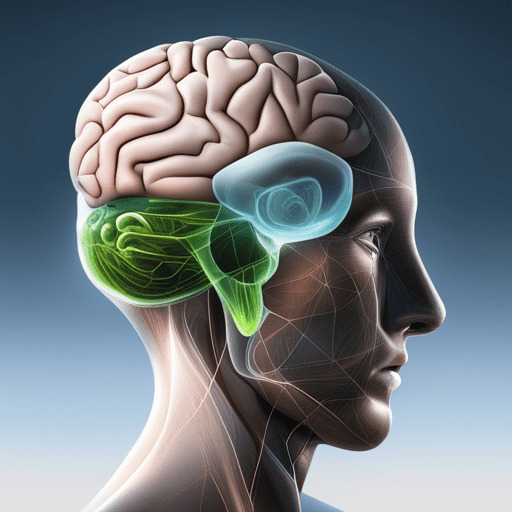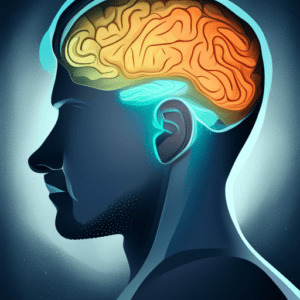#BasalForebrain
Text
The Mysteries of Motivation: Deep Dive into the Brain's Role

Our ideas, feelings, and, most crucially, our motivations all originate in the human brain, a natural miracle. But what is it in the human brain that causes us to take action, strive, and succeed? This article explores the exciting issue of Motivation by delving into the intricate neurological systems that support it. We'll learn about the brain regions that play a part in Motivation, the chemicals that play a part in that process, and the effects that neurological illnesses may have on our drive. We'll also discuss where this field of Study is going and how we can tap into the brain's latent motivational powers.
Which Part of Your Brain is Involved in Your Motivation?

Which Part Of Your Brain Is Involved In Your Motivation?
The Limbic System, the Source of All Drive
The limbic system, or "emotional brain," is fundamental regarding our drive and Motivation. The hippocampus and the amygdala are the only parts of this intricate network that govern our reward and punishment systems. The limbic system is pivotal in memory formation and regulates our emotional lives. The emotional component of memory causes us to anticipate or fear certain occurrences in the future.
The Function of the Basal Forebrain in Memory and Learning
The basal forebrain is engaged in learning and memory and is a crucial component of Motivation. It aids in shaping future behavior by associating it with positive or negative outcomes. This brain region is also essential for maintaining focus, regulating wakefulness, and falling asleep. It's vital for sensory perception and free-willed movement because it supplies the cerebral cortex with acetylcholine.
How Neurotransmitters Like Dopamine Drive Behavior
Dopamine, the Heroin of the Reward System
Dopamine is a neurotransmitter often known as the "feel-good chemical of the brain." When we experience pleasure, our brains produce dopamine, which reinforces and motivates us to pursue similar experiences in the future. Dopamine regulates the secretion of other hormones and is also involved in motor control. Regarding the motivational aspect of reward-motivated behavior, these dopamine pathways are crucial.
The Nucleus Accumbens and the Ventral Tegmental Area Work Together to Process Rewards
The nucleus accumbens and ventral tegmental area (VTA) are inseparable when processing rewards and inspiring action. The anticipation of a reward triggers the release of dopamine in these regions. The nucleus accumbens, among other brain regions, receives dopamine from the ventral tegmental area (VTA), which ultimately causes a sensation of reward or pleasure. This drives us to keep doing things that are rewarding in the first place.
Dopamine's Effects on Mood and Reinforcement Learning
Dopamine is also crucial in the formation of emotional responses and long-term memory. It reinforces existing synapses by reinforcing positive connections in the hippocampus (the brain's learning and memory hub). This step is essential for reward learning to take place, in which we learn to repeat actions that resulted in satisfying results in the past.
Which region of the brain is responsible for our desires and emotions?
Physiology of the Amygdala The Brain's Emotional Control Center
Emotional processing relies heavily on the amygdala, a little almond-shaped structure in the brain. It influences our motives and emotions and plays a pivotal role in the fear and pleasure responses. The amygdala also helps choose which memories to keep and where in the brain to keep them. This metric considers the intensity of the felt impact of an inevitable occurrence. For example, if a person goes through an emotionally taxing experience, the amygdala directs them to file away their thoughts and feelings about that time.
The Motivating Power of the Prefrontal Cortex
The frontal lobe of the brain, known as the prefrontal cortex, is responsible for executive functions such as planning, decision-making, and social conduct. It's essential to our Motivation since it aids in weighing potential gains against costs and deciding how best to proceed. The prefrontal cortex also controls executive tasks, including time management, focus switching, detail recall, self-control, and incorporating previous experiences into current actions.
One of the Brain's Most Important Reward and Motivation Centers
Another important brain region involved in Motivation is the striatum in the basal ganglia. It's active when we're feeling driven to do something since it plays a role in the brain's reward processing system. In addition to its function in motor and movement planning, the striatum is also involved in decision-making, Motivation, reinforcement, and the perception of rewards.
Where Do You Find Your Drive? Frontal Lobe?
Motivation and Self-Control Rely on the Lateral Prefrontal Cortex.
The frontal lobe's lateral prefrontal cortex has a role in self-control. A key component of Motivation, willpower allows us to rein in urges and make choices that support our long-term objectives. Working memory, cognitive flexibility, planning, inhibition, and abstract thinking depend on activity in this part of the brain.
Implications of Frontal Lobe Development on Risk-Taking and Social Acceptance
During this time, a lot of development occurs in the brain's frontal lobe. Teenagers are often highly driven by peer approval and may participate in dangerous activities to get it, which might impact Motivation throughout this development stage. The frontal lobe is also responsible for movement, problem-solving, spontaneity, memory, language, beginning new tasks, judging, resisting temptation, and engaging in social and sexual conduct.
Imbalances in the Brain's Reward System and Psychiatric Illness

Brain's Reward System
The Lateral Habenula Is an Important Part of the Brain's Reward System
The small brain region known as the lateral habenula is pivotal in the brain's reward system. Dysfunction in this region has been associated with mental diseases characterized by excessive aggressiveness, which is thought to encode punishment by suppressing dopamine release. The lateral habenula is engaged in more than only pain processing; it also plays a role in reproduction, eating, sleeping, stress management, and immune function.
Damage to the Brain's Reward System as a Cause of Aggression
Misdirected activation of the brain's reward system in response to aggressive social cues is one possible cause of aggression. When stimulated, some parts of the amygdala may cause anger and aggressiveness, while other portions, when removed, can make laboratory animals more submissive. This points to the amygdala as a critical player in aggressive and violent behavior.
New Frontiers and Unanswered Questions in the Study of Motivation
Basal forebrain involvement in Motivation: a promising area for Study
The basal forebrain is a potential topic for future Study because of its role in learning and memory. Studying this factor's influence on Motivation might light up fundamental questions about cognition and behavior. The basal forebrain plays a role in sleep, waking, attention, and different states of consciousness.
A Look into the Future of Brain Stimulation and Its Effect on Motivation
The potential of brain stimulation methods like transcranial magnetic stimulation to increase Motivation is being investigated. Preliminary studies indicate that activating specific brain regions might boost Motivation and performance. A lack of Motivation typically characterizes depression and attention deficit hyperactivity disorder (ADHD). Therefore, this might lead to novel therapies for both disorders.
Using Your Brain to Its Full Potential Through Inspiration

Using Your Brain To Its Full Potential Through Inspiration
Cognitive Improvement: Fueling Your Brain with Inspiration
Increase your brain's Motivation by engaging in cognitive improvement practices like brain training activities and mindfulness meditation. Motivated individuals may benefit from these methods because they enhance the brain circuits responsible for Motivation. For instance, brain training activities help you improve your memory and problem-solving abilities, simplifying planning and accomplishing your objectives. In contrast, mindfulness meditation can help you focus on your goals by lowering stress and worry.
Motivation Improvement Through Mental Exercise

Motivation Improvement Through Mental Exercise
Puzzles, memory games, and other forms of mental exercise have been shown to boost Motivation and cognitive performance. These mental workouts help strengthen brain areas responsible for processing Motivation and reward. Doing these things will improve your brain's Motivation and help you reach your objectives.
An Intricate Tango Between the Brain and Motivation
Summary: The Brain's Hidden Role in Optimal Motivation
The brain's part in Motivation involves complex structures, chemicals, and neuronal connections. Each region of the brain, from the primitive brain to the more evolved prefrontal cortex, is essential in determining our choices and actions. Learning about these processes may help you get insight into your motivations and use your brain more effectively to accomplish your objectives.
Exploring the Path Forward in Our Knowledge of What Drives People
We set out on a path of research and invention as we strive to decipher the secrets of the brain and Motivation. Discoveries, enhanced therapies, and a better knowledge of the human brain are all in store for motivational research in the years to come. The Study of Motivation is an academic exercise and a personal search for insight.
Read the full article
#BasalForebrain#Brain#CognitiveScience#Dopamine#EmotionalBrain#LearningandMemory#LimbicSystem#Motivation#Neuroscience#PrefrontalCortex#Psychology#RewardSystem#whichpartofyourbrainisinvolvedinyourmotivation?
2 notes
·
View notes